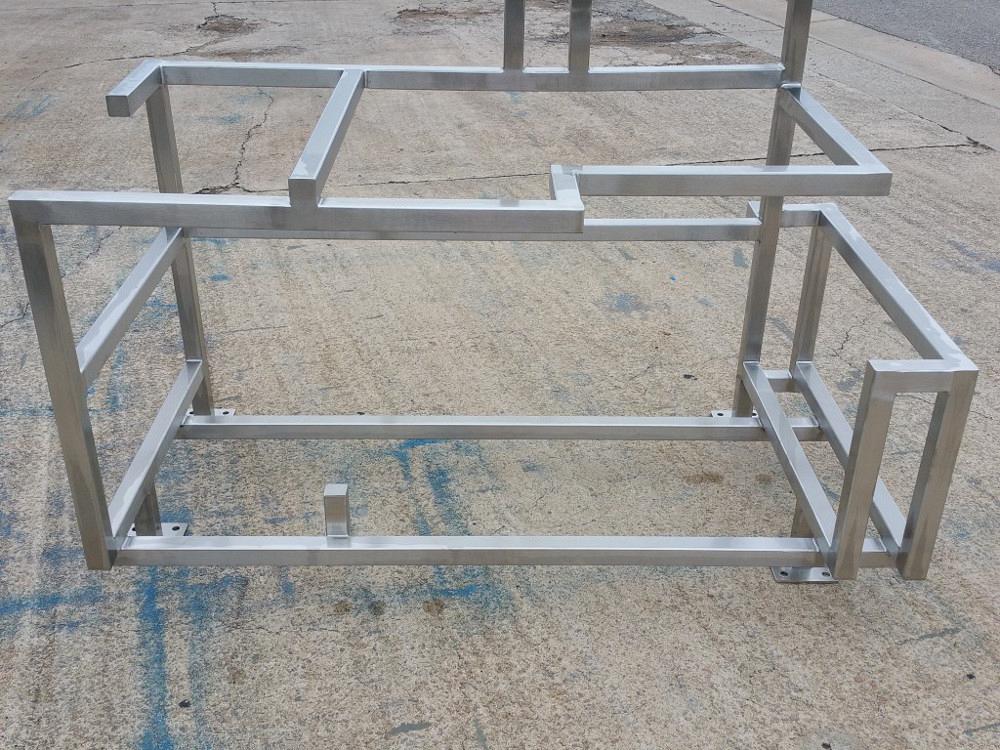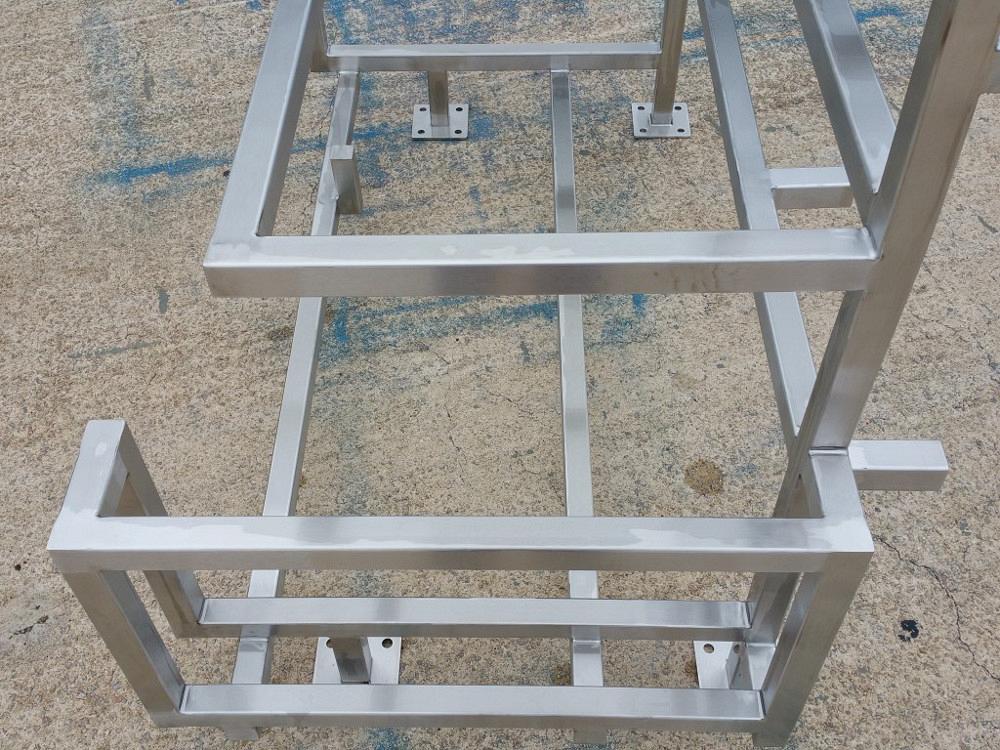- FMA
- The Fabricator
- FABTECH
- Canadian Metalworking
Categories
- Additive Manufacturing
- Aluminum Welding
- Arc Welding
- Assembly and Joining
- Automation and Robotics
- Bending and Forming
- Consumables
- Cutting and Weld Prep
- Electric Vehicles
- En Español
- Finishing
- Hydroforming
- Laser Cutting
- Laser Welding
- Machining
- Manufacturing Software
- Materials Handling
- Metals/Materials
- Oxyfuel Cutting
- Plasma Cutting
- Power Tools
- Punching and Other Holemaking
- Roll Forming
- Safety
- Sawing
- Shearing
- Shop Management
- Testing and Measuring
- Tube and Pipe Fabrication
- Tube and Pipe Production
- Waterjet Cutting
Industry Directory
Webcasts
Podcasts
FAB 40
Advertise
Subscribe
Account Login
Search
Poor customer drawings create headaches and costly rework
- By Nick Martin
- August 26, 2016
Drawings from our customers are often sent to us in a requested format that we can work with. Some are better than others, but using anything that takes the work out of redesign is always money ahead for both sides of the bill. However, there are times when you are given something and told, “This is all we have, and you need to make it work.”
Sometimes this is pretty straightforward work; other times the job requires expensive material and the people doing it really don’t want to screw it up! We recently had one of these situations come up at the shop. The customer wanted an intricate frame made out of stainless steel tubing. This is what we do here at Barnes MetalCrafters, so it wasn’t anything new to us. If this was to go as planned, the only thing we needed to worry about was due dates. At the beginning of this project, that wasn’t an issue.
We can open almost any file format you throw at us with our suite from Autodesk® and turn that into a product we can fabricate. And then there is always the trusty PDF that can be viewed by anyone with a digital device. In this case, a PDF was all we could get our hands on.
We couldn’t pull dimensions and had to rely on what the engineer or designer provided in his “pictures.” When we attempted to get the CAD files, the customer would not provide them, because too many changes had been made. There was the chance that we might not get the latest revision and would make something different than what they expected.
I wasn’t used to not having more information at my fingertips and being able to answer dimensional questions with a couple of mouse clicks. That is what I do quite often here at the shop.
The customer’s packet of drawings comprised 12 subassembly drawings and one main assembly drawing. I was tasked with making the cut sheets for the 12 subassemblies, and I figured it wouldn’t be too bad. We had to weld a lot of end caps to the straight cuts, so I had to make the required changes to ensure the correct number of laser-cut caps. This task wasn’t too daunting, but when it comes to doing things my way, the numbers I really wanted to see weren’t on the drawing. I hadn’t made a calculator dance like that in a while!
My cut sheet was finished on a Friday, and Randy Davis was coming in to make the required saw cuts the next morning. He called me to ask a couple of questions about my numbers, and I could sense the excitement in his voice about this project. I had made a couple of errors, but he caught them before any material was cut. I was pretty thankful for that, seeing as how this was expensive stainless steel tubing.
That Monday Randy began putting all of the subassemblies together. These were pretty straightforward with a lot of end caps to weld on. The fun part was to be in the final assembly.
As the frame started to go together, the numbers weren’t adding up. We had to trust their drawings and use the main assembly drawing to base everything from. One main problem we had was that only a few dimensions were on the assembly drawing. You had to do the math based on each individual subassembly. Total pain in the rear.
This project was becoming a nightmare. When ratchet straps are involved to get things square, something is probably not going the way it should. Our dimensions were off by at least an inch on some parts. After a lot of head scratching, my dad Tim Martin and Randy ended up finding some of the mistakes.
This was a very stressful situation for everyone in the shop. Due dates were constantly being discussed, and we knew there was no way we were going to meet the first one. At least two days were lost finding and fixing errors that could have easily been prevented with a simple CAD file.
After all of the taking apart and rewelding was completed, we ended up throwing a couple more guys on the finishing end of the project. All welds were to be ground smooth and blended out to match the grain. This required a lot of overtime, and most of the money we had in the job was pretty much null at this point.
The good thing was, we had to make two of these assemblies. Some of the parts for the first were robbed from the second to save time. We still didn’t make the due date, but we ended up completing the second frame in about 20 percent of the time it took to do the first.
In the end, we completed and delivered the parts. The fires were put out but not without a bit of excitement. Check out the pictures, and let me know what you think. There was quite a bit of anger built into those assemblies. Remember, if you start wrong, everything is likely to go wrong down the line.
All images courtesy of Barnes MetalCrafters.
subscribe now

The Fabricator is North America's leading magazine for the metal forming and fabricating industry. The magazine delivers the news, technical articles, and case histories that enable fabricators to do their jobs more efficiently. The Fabricator has served the industry since 1970.
start your free subscriptionAbout the Author

Nick Martin
2121 Industrial Park Drive SE
Wilson, NC, 27893
252-291-0925
Related Companies
- Stay connected from anywhere

Easily access valuable industry resources now with full access to the digital edition of The Fabricator.

Easily access valuable industry resources now with full access to the digital edition of The Welder.

Easily access valuable industry resources now with full access to the digital edition of The Tube and Pipe Journal.
- Podcasting
- Podcast:
- The Fabricator Podcast
- Published:
- 05/07/2024
- Running Time:
- 67:38
Patrick Brunken, VP of Addison Machine Engineering, joins The Fabricator Podcast to talk about the tube and pipe...
- Trending Articles
Young fabricators ready to step forward at family shop

Material handling automation moves forward at MODEX

A deep dive into a bleeding-edge automation strategy in metal fabrication

White House considers China tariff increases on materials

BZI opens Iron Depot store in Utah

- Industry Events
Laser Welding Certificate Course
- May 7 - August 6, 2024
- Farmington Hills, IL
World-Class Roll Forming Workshop
- June 5 - 6, 2024
- Louisville, KY
Advanced Laser Application Workshop
- June 25 - 27, 2024
- Novi, MI
Precision Press Brake Certificate Course
- July 31 - August 1, 2024
- Elgin,





























